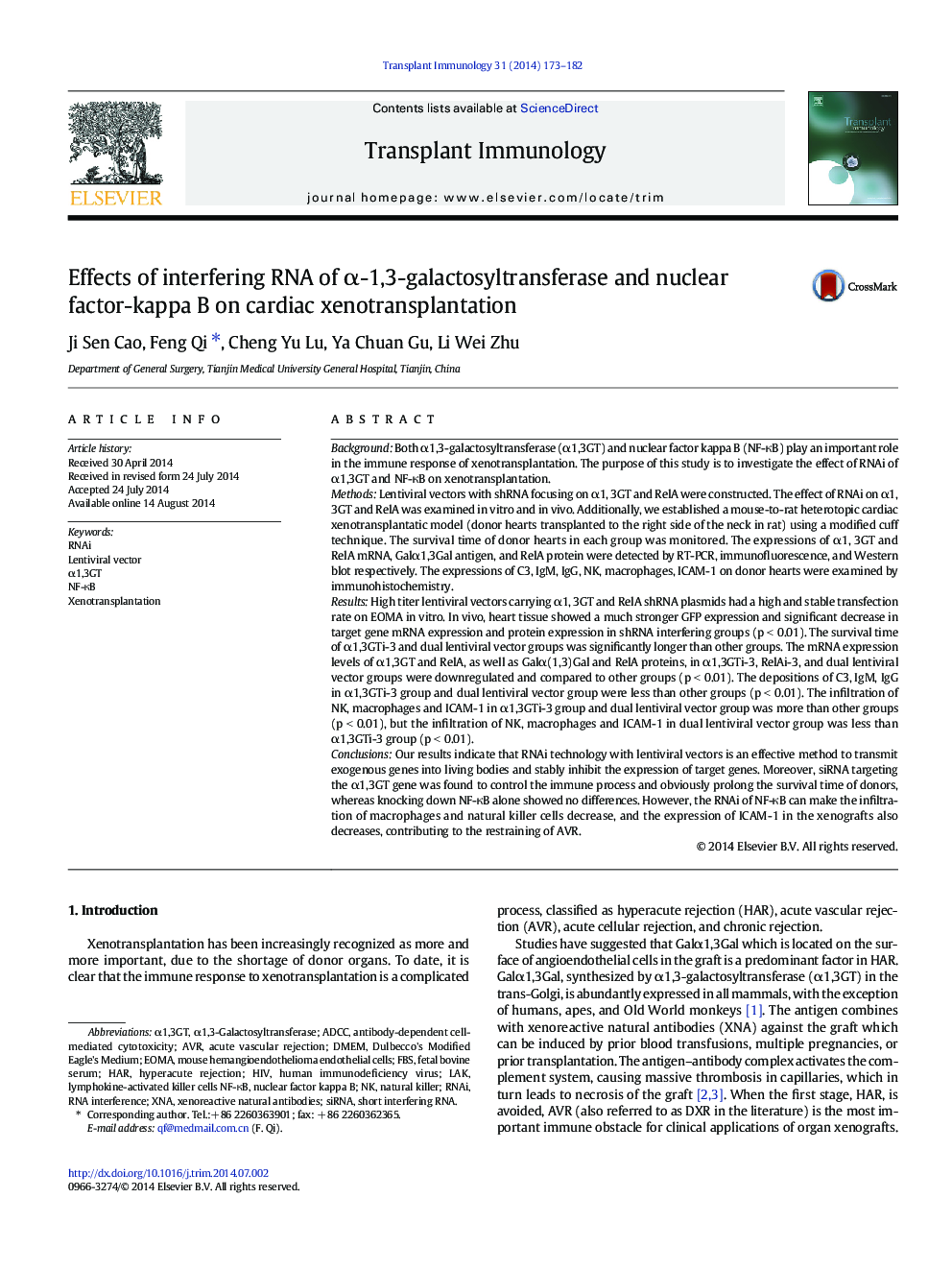| Article ID | Journal | Published Year | Pages | File Type |
|---|---|---|---|---|
| 3392006 | Transplant Immunology | 2014 | 10 Pages |
•RNAi with lentiviral vectors is effective to transmit exogenous genes.•RNAi of α1,3GT can prolong the survival time of donors.•RNAi of NF-κB can decrease the infiltration of macrophages and NK cells.•RNAi of NF-κB can decrease the expression of ICAM-1 in the xenografts.
BackgroundBoth α1,3-galactosyltransferase (α1,3GT) and nuclear factor kappa B (NF-κB) play an important role in the immune response of xenotransplantation. The purpose of this study is to investigate the effect of RNAi of α1,3GT and NF-κB on xenotransplantation.MethodsLentiviral vectors with shRNA focusing on α1, 3GT and RelA were constructed. The effect of RNAi on α1, 3GT and RelA was examined in vitro and in vivo. Additionally, we established a mouse-to-rat heterotopic cardiac xenotransplantatic model (donor hearts transplanted to the right side of the neck in rat) using a modified cuff technique. The survival time of donor hearts in each group was monitored. The expressions of α1, 3GT and RelA mRNA, Galα1,3Gal antigen, and RelA protein were detected by RT-PCR, immunofluorescence, and Western blot respectively. The expressions of C3, IgM, IgG, NK, macrophages, ICAM-1 on donor hearts were examined by immunohistochemistry.ResultsHigh titer lentiviral vectors carrying α1, 3GT and RelA shRNA plasmids had a high and stable transfection rate on EOMA in vitro. In vivo, heart tissue showed a much stronger GFP expression and significant decrease in target gene mRNA expression and protein expression in shRNA interfering groups (p < 0.01). The survival time of α1,3GTi-3 and dual lentiviral vector groups was significantly longer than other groups. The mRNA expression levels of α1,3GT and RelA, as well as Galα(1,3)Gal and RelA proteins, in α1,3GTi-3, RelAi-3, and dual lentiviral vector groups were downregulated and compared to other groups (p < 0.01). The depositions of C3, IgM, IgG in α1,3GTi-3 group and dual lentiviral vector group were less than other groups (p < 0.01). The infiltration of NK, macrophages and ICAM-1 in α1,3GTi-3 group and dual lentiviral vector group was more than other groups (p < 0.01), but the infiltration of NK, macrophages and ICAM-1 in dual lentiviral vector group was less than α1,3GTi-3 group (p < 0.01).ConclusionsOur results indicate that RNAi technology with lentiviral vectors is an effective method to transmit exogenous genes into living bodies and stably inhibit the expression of target genes. Moreover, siRNA targeting the α1,3GT gene was found to control the immune process and obviously prolong the survival time of donors, whereas knocking down NF-κB alone showed no differences. However, the RNAi of NF-κB can make the infiltration of macrophages and natural killer cells decrease, and the expression of ICAM-1 in the xenografts also decreases, contributing to the restraining of AVR.
